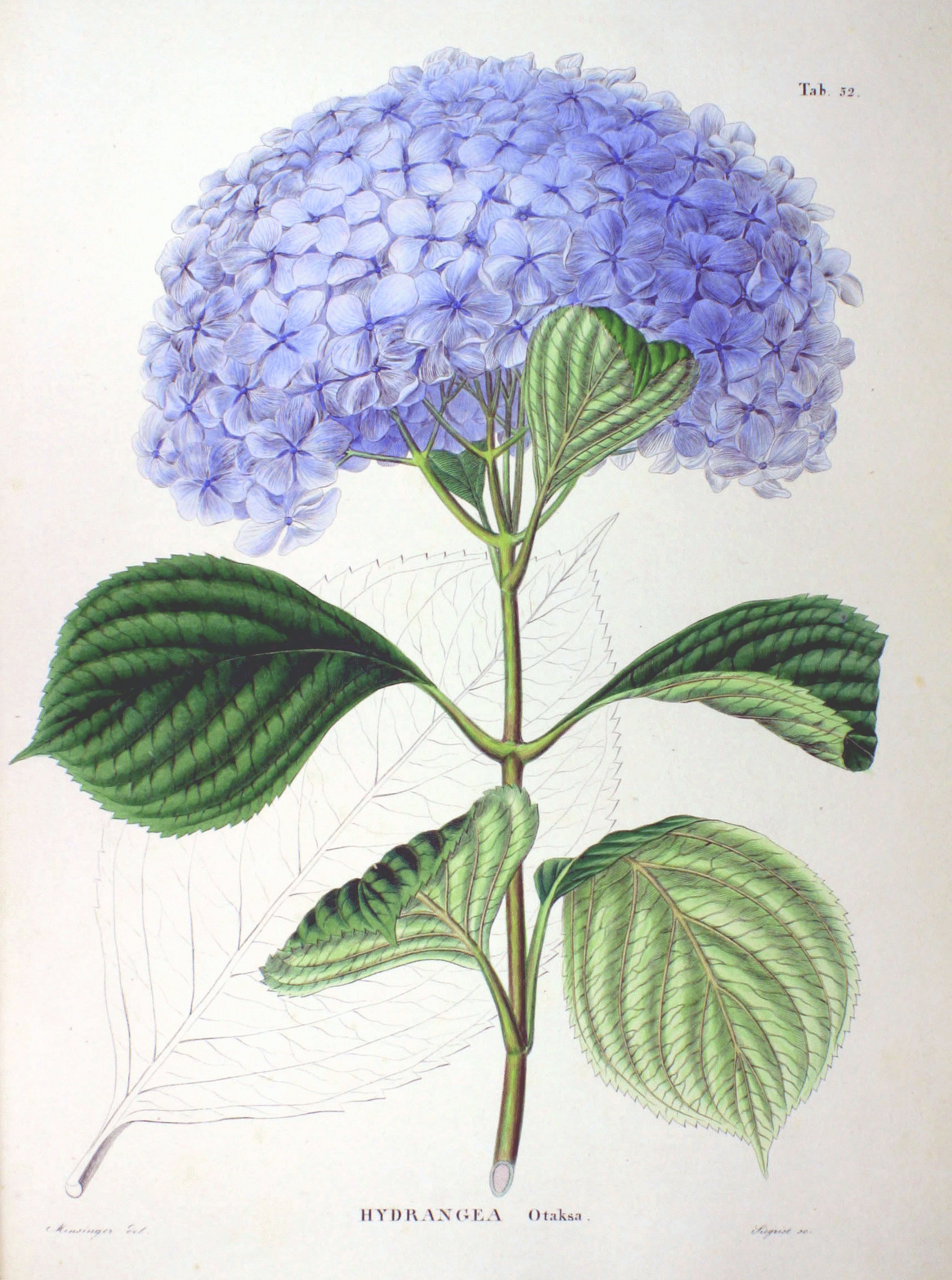Flora Japonica (1834 Book) on:
[Wikipedia]
[Google]
[Amazon]
' is a
 The work was published as 2 volumes in 30 parts, with first part of volume I published in December 1835.Live Auction 2717, Lot 75
The work was published as 2 volumes in 30 parts, with first part of volume I published in December 1835.Live Auction 2717, Lot 75
Closed 21 June 2013. Retrieved 25 April 2023. Volume I was completed in June 1841. Parts 1-5 of the second volume were issued between 1842 and 1844, after which work by Siebold stopped. The final 5 parts of the second volume were issued by Miquel in 1870. Copies of the original work are rare, and one fetched US$27,500 at auction in 2013 ($ today).
Volume I
at Gallica with illustration plates in black and white *Text o
Volume II
at Gallica with illustration plates in black and white
Illustration plates of ''Flora Japonica''
in color at
Illustration plates of ''Flora Japonica''
in color at www.BioLib.de Florae (publication) 19th-century books in Latin {{Botany-book-stub
Flora
Flora (: floras or florae) is all the plant life present in a particular region or time, generally the naturally occurring (indigenous (ecology), indigenous) native plant, native plants. The corresponding term for animals is ''fauna'', and for f ...
written in Leyden
Leiden ( ; ; in English and archaic Dutch also Leyden) is a city and municipality in the province of South Holland, Netherlands. The municipality of Leiden has a population of 127,046 (31 January 2023), but the city forms one densely connecte ...
by Bavarian botanist and traveler Philipp Franz von Siebold
Philipp Franz Balthasar von Siebold (17 February 1796 – 18 October 1866) was a German physician, botanist and traveller. He achieved prominence by his studies of Japanese flora (plants), flora and fauna (animals), fauna and the introduction of ...
in collaboration with fellow Bavarian Joseph Gerhard Zuccarini
Joseph Gerhard Zuccarini (10 August 1797 – 18 February 1848) was a German botanist, Professor of Botany at the University of Munich. He worked extensively with Philipp Franz von Siebold, assisting in describing his collections from Japan, and ...
. The work, written in Latin, carries the full title of ''Flora Japonica; sive, Plantae Quas in Imperio Japonico Collegit, Descripsit, ex Parte in Ipsis Locis Pingendas Curavit.''.
Begun in 1835 by Siebold and Zuccarini, work continued until 1842. After Zuccarini's death in 1848, Siebold discontinued his involvement with the work, and the materials accrued to in Leyden. After Siebold's death in 1866, F. A. W. Miquel, director of the Rijksherbarium, completed the work.
Siebold was already widely known in Japan for various endeavors, and this work cemented his scientific fame in Europe.
Background
In service of theDutch East India Company
The United East India Company ( ; VOC ), commonly known as the Dutch East India Company, was a chartered company, chartered trading company and one of the first joint-stock companies in the world. Established on 20 March 1602 by the States Ge ...
, Siebold was stationed on Dejima, the artificial island next to Nagasaki, which served as then-isolated Japan's gateway to the West. He arrived in 1823, serving as both a physician and botanist, remaining in Japan until 1830. During his stay in the Orient, he started a small botanical garden behind his home and amassed over 1,000 native plants. In a specially built glasshouse he cultivated the Japanese plants to endure the Dutch climate and he sent many herbarium specimens to Europe. Following his return to Europe, he settled in Leyden and began work with Zuccarini on the ''Flora''.
Work
 The work was published as 2 volumes in 30 parts, with first part of volume I published in December 1835.Live Auction 2717, Lot 75
The work was published as 2 volumes in 30 parts, with first part of volume I published in December 1835.Live Auction 2717, Lot 75Closed 21 June 2013. Retrieved 25 April 2023. Volume I was completed in June 1841. Parts 1-5 of the second volume were issued between 1842 and 1844, after which work by Siebold stopped. The final 5 parts of the second volume were issued by Miquel in 1870. Copies of the original work are rare, and one fetched US$27,500 at auction in 2013 ($ today).
References
External links
*Text of atGoogle Books
Google Books (previously known as Google Book Search, Google Print, and by its code-name Project Ocean) is a service from Google that searches the full text of books and magazines that Google has scanned, converted to text using optical charac ...
with illustration plates in black and white
*Text oVolume I
at Gallica with illustration plates in black and white *Text o
Volume II
at Gallica with illustration plates in black and white
Illustration plates of ''Flora Japonica''
in color at
Wikimedia Commons
Wikimedia Commons, or simply Commons, is a wiki-based Digital library, media repository of Open content, free-to-use images, sounds, videos and other media. It is a project of the Wikimedia Foundation.
Files from Wikimedia Commons can be used ...
Illustration plates of ''Flora Japonica''
in color at www.BioLib.de Florae (publication) 19th-century books in Latin {{Botany-book-stub